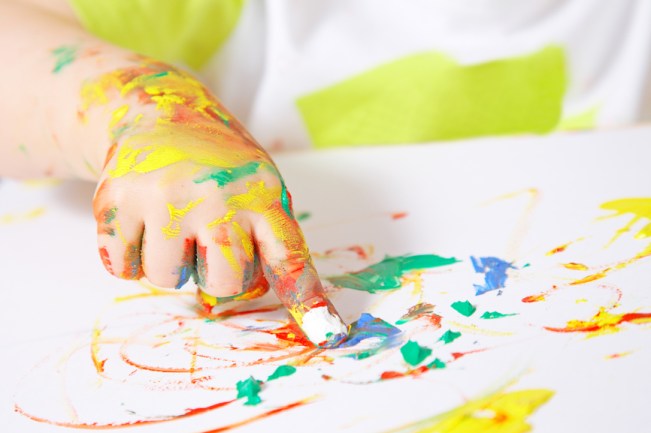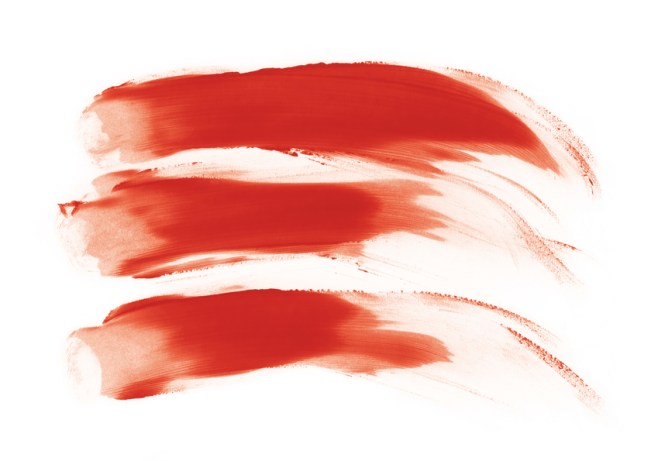Therapeutic
As a former art therapist and learning specialist, I often utilized finger painting in my practice. Finger painting is an age-old activity that fosters children’s creativity as it captivates their interest.
Kerry Greasley explains, “Finger painting has existed for centuries, but was established in its modern form in the 1930s by Ruth Faison Shaw. She was one of the first to recognise its therapeutic potential and was hailed as “a pioneer in progressive education”. At a time when many thought children should be seen and not heard, she saw finger painting as an important way for children to communicate their unexpressed words and feelings. The instinctive nature of finger painting, she said, “aids the imagination and gives a delight in creating things subconsciously – things that one may not even have seen or dreamed of before”.
Benefits
Dr Elsie Calitz, a mother of five adult children and a grandmother of six, offers this list of 15 reasons to finger paint:
- Kids can learn informally about mixing and exploring colours.
- Sensory integration is promoted.
- All the senses are involved: seeing, hearing, touching, smelling, and (if you use edible paint) tasting!
- Finger painting strengthens the finger and hand muscles, thereby improving fine motor development .
- The development of hand-eye coordination is supported.
- If you place the paper on the floor, large muscle control and balance could be improved.
- Finger painting is easier for little fingers that are not yet ready to manipulate a brush with skill.
- This is a non-prescriptive way of promoting children’s self-expression.
- There is a focus on the process, not on the end result or the finished product.
- Finger painting is therapeutic – children can express their feelings visually without using words.
- It stimulates creativity and imagination.
- Finger painting is an excellent way of creating shared art work with a group of kids working together.
- The finished art work and the process are stimulation points for discussion on the creative process, the colours, the themes, the design etc., thus language development is promoted.
- Kids learn that they can manipulate and be in control of their surroundings.
- It is messy, which also means it is fun!
Homemade
Store bought finger paints can be filled with toxins and synthetic colorants. Make your own finger paint using non-toxic, safe, organic ingredients!
Jeannie Lyon has published a non-toxic finger paint recipe:
Ingredients
3 tablespoons organic sugar
1/2 teaspoon salt
1/2 cup organic corn starch
2 cups water
organic food colorants such as Maggie’s Naturals, NaturalFlavors , IndiaTree or make your own instructions below
Instructions
Add a couple of drops of natural food colorants to a muffin tin or other container. Add all of the other ingredients to a small saucepan and continually stir over low heat until the mixture thickens to a paint consistency. Pour equal amounts of the paint mixture into each muffin section. Mix each of the paints up until the color is evenly distributed. Get painting!
Make your own food coloring
Yellow
Bring 2-cups of water to a boil.
Let the water cool for 1 minute.
Add a small amount of turmeric to the water.
Continue adding little bits of turmeric until you reach the desired color.
Store in a glass container after cooling.
Red
Add several medium-size, unpeeled beets to a pan and cover them with water.
SImmer the beets for 35 minutes or until they can be pierced with a fork.
Remove the pan from the heat and let it cool.
Peel the beets.
Chop the beets and put them back into the pan with the water.
Leave the pan for several hours, watching as the color of the water changes.
Strain the liquid through a piece of cheesecloth into a glass jar.
Mix 2 teaspoons of organic white vinegar into the water.
Shake well and store.
Green
Place 2-cups of fresh spinach leaves in a pot.
Cover the leaves with water.
Boil the leaves for 1-minute.
Let the pot simmer for 10 minutes.
Allow the water to cool.
Strain the colored water through a cheesecloth into a galss jar.
Store with a tight fitting lid.
Source: http://organic.lovetoknow.com/Natural_Food_Coloring
Additional ideas to make your own natural food coloring.
Let them be
Once you set your children up to finger paint, consider this advice: “Don’t teach them, don’t praise them, don’t correct them, let them experiment, play, imagine and create the world they want to live in.” Written by Sally Fallon Morell and Dr. Thomas Cowan, MD in their new book in regard to the serious business of play. “For children, play is a serious business in which adults have no right to interfere. That’s right; notwithstanding the advice of countless childrearing experts who advocate “play time” with their children, parents should not share in a child’s play activities. Children’s play is an activity so foreign to an adult consciousness that no parents can really play with their children. … Note that playing baseball or soccer doesn’t count as play.”
What do you think about these statements about play?!
What is your experience of finger painting? Did you do it as a child? Do you have your children finger paint? Have you made your own?
Read some public comments about this article made on Facebook.


13 Responses to Nourish the whole child with finger painting!
My daughter loves to finger/hand paint, despite having generally heightened sensation and not liking to be dirty or wet. She also likes to paint with no clothes on and decorated her arms and belly too. Not quite the same but I also give her different tools to paint with: toothpick, spoon, etc and she really enjoys that. I agree: Let them be! So much to be learned and enjoyed painting on their own.
That is interesting, Monica – that Vesta enjoys finger painting but, not being dirty or wet! What finger paints do you use? I’d love a good recommendation for a ready made!
I love the idea of finger painting but my little one HATES it! I think it is a sensory thing, he can’t stand the feeling of the paint on his hands, he just starts crying. Any tips on how to get him over this?
If it was me, I would honor his discomfort and find another creative endeavor he enjoys! How old is he?
I remember finger painting being a sensory high. So free-ing and oh, the smells…….
I remember giving birth first time in a hospital with interns wandering in to “observe’ and bright lights and the general feeling of being on a reality tv show and deciding never wanting to be there again and then having my next baby at home, in the dark, in the quiet. I wanted to finger paint my next birth.
The memories of finger painting, of being completely connected to something which we do not necessarily understand on an intellectual level is powerful. maybe we need to finger paint as adults?
I interviewed Sally Fallon Morell earlier today about her new book co-authored with Dr. Thomas Cowan: The Nourishing Traditions Book of Baby & Child Care, which she anticipates may be controversial. She envisions that there are plenty of recommendations made in the book that some people will not agree with.
We discussed her position on breastfeeding, donor milk, breastfeeding while pregnant, prenatal vitamins, baby lead weaning, introducing solids, playing with our children, vaccinations, the underlying philosophy behind the book, and some reader questions related to topics such colloidal silver and the like.
I am having the recorded interview professionally transcribed for those in our community who are hearing impaired, and for those who prefer to read rather than to listen.
I will publish the interview in both forms in a few days!
Here is a sneak peak of the recorded interview, meanwhile, on the topic of play: https://nourishingourchildren.org/Sally-Fallon-Morell-on-Play.mp3, which was a topic raised with this post.
Is 7 1/2 months too early to finger paint?
I don’t think so. My children were finger painting as soon as they could sit up.
[…] Image: nourishingourchildren.wordpress.com […]
[…] 1, 2, 3, 4, 5, 6, 7, 8, 9, 10, […]
[…] Image source: https://nourishingourchildren.wordpress.com/2013/02/16/nourish-the-whole-child-with-finger-painting/ […]
[…] image from https://nourishingourchildren.wordpress.com/2013/02/16/nourish-the-whole-child-with-finger-painting/ […]
Great blog entry! As an early childhood director, I fully understand the point that you have expressed in your writing. As a blogger myself, I thank you and many others like you for spreading the word. Let the children play! Let them grow, let them live.